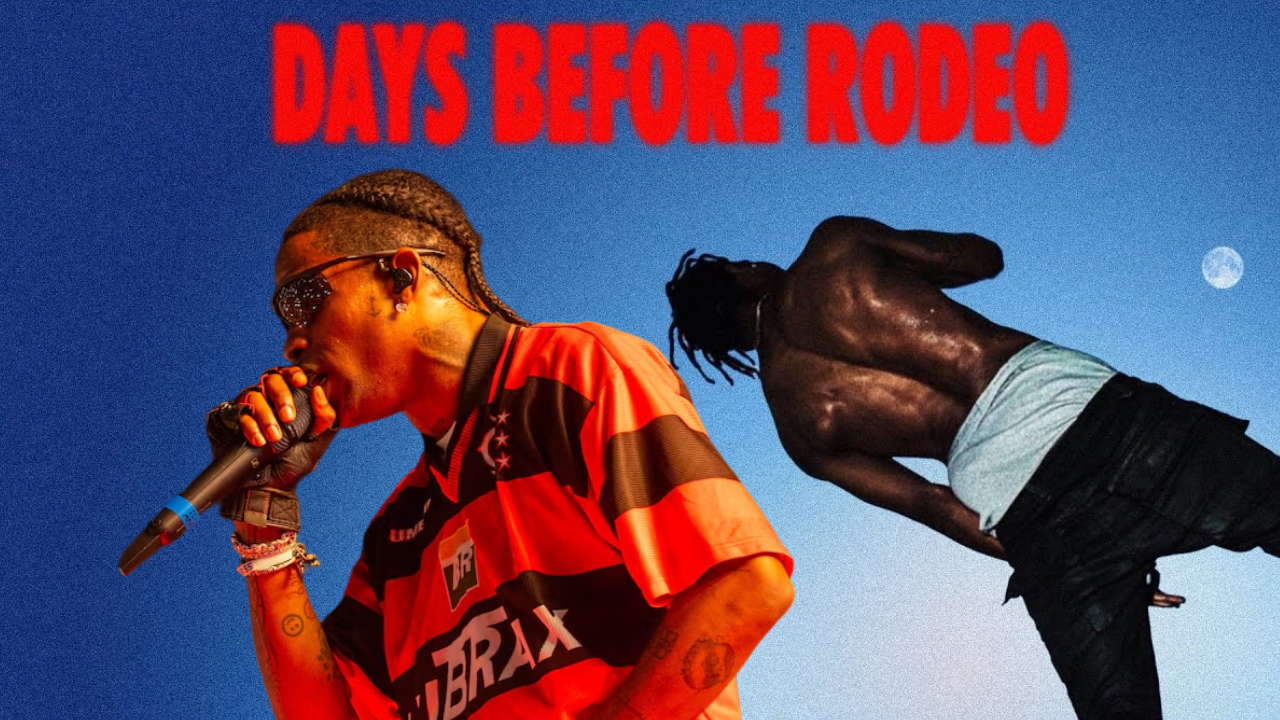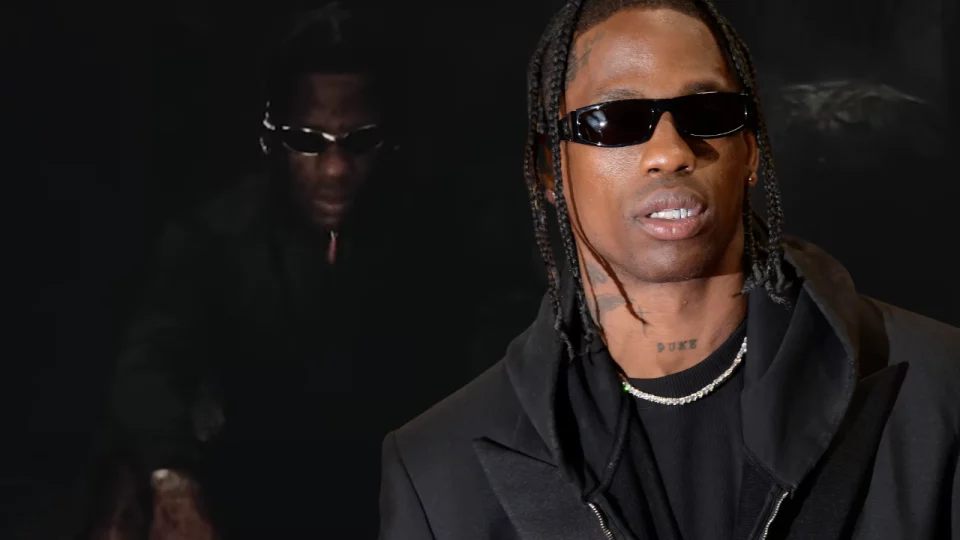Travis Scott has consistently proven himself to be a master of creating cultural moments that resonate beyond just the music.
His ability to craft an entire experience around his projects is a hallmark of his career, and his latest move—a music video release for the fan-favorite track “Drugs You Should Try It”—is no exception. This drop coincides with the long-awaited streaming release of his iconic mixtape, Days Before Rodeo, now a decade old, yet still considered by many as some of his best work. The visual and the mixtape release have created a nostalgic wave among fans and highlighted Scott’s strategic genius in keeping his legacy alive.
Table of Contents
A Decade Later: The Enduring Influence of Days Before Rodeo
Released in 2014, Days Before Rodeo is more than just a prelude to Scott’s debut studio album, Rodeo. It represents a crucial turning point in his career, marking the moment when the Houston-born artist solidified his place in the rap industry. Prior to this mixtape, Scott was known primarily as a promising protégé of Kanye West and T.I., but with Days Before Rodeo, he stepped out of their shadows to carve out his unique sonic space. The project features a blend of dark, moody beats, high-energy bangers, and introspective tracks that showcased his versatility as an artist. It was the mixtape that hinted at the Travis Scott we now know—a boundary-pushing artist who could blend genres and moods with ease, all while maintaining a distinctive style.
What sets Days Before Rodeo apart from many mixtapes of its era is its cohesiveness and its ability to transcend the mixtape format. It’s a body of work that feels more like an album, with meticulous production and a clear narrative arc. The project is also notable for its collaborations, featuring Atlanta heavyweights like T.I., Young Thug, Migos, and producers such as Metro Boomin and FKI 1st, who were instrumental in defining the sound of the mixtape. The inclusion of these artists not only added to the project’s appeal but also helped Scott in establishing strong ties with the Atlanta rap scene, which was, and still is, a dominant force in the hip-hop landscape.

“Drugs You Should Try It”: A Masterpiece in Subtlety
Among the standout tracks on Days Before Rodeo is “Drugs You Should Try It”, a song that, even ten years later, is often cited as Scott’s best work. Unlike the high-energy anthems that Scott is typically known for, “Drugs You Should Try It” is a more subdued and introspective track. The song features a hauntingly beautiful guitar melody, layered with ethereal production from FKI 1st, and Scott’s voice, heavily auto-tuned and distorted, drifts in and out like a ghostly presence. The lyrics are open to interpretation, with the titular “drugs” potentially representing not just substances, but also emotions, experiences, or even relationships.
The brilliance of “Drugs You Should Try It” lies in its simplicity. The track doesn’t rely on heavy beats or aggressive delivery to make an impact. Instead, it creates an atmosphere that is both melancholic and hypnotic, drawing the listener in with its understated beauty. FKI 1st, the producer behind the track, once remarked on its uniqueness, noting that there was nothing quite like it at the time of its release. The song’s structure, the use of pauses, the effects on Scott’s voice—all of these elements contribute to a composition that is as innovative as it is timeless.
This song also marked a pivotal moment in Scott’s career, proving that he was more than just a purveyor of mosh-pit anthems. It showed that he had depth, that he could create music that resonated on an emotional level, and that he was capable of producing art that could stand the test of time. In many ways, “Drugs You Should Try It” is a precursor to the more melodic and introspective work that would characterize parts of his later albums, such as Astroworld.
The Significance of the New Music Video
The release of the music video for “Drugs You Should Try It” feels like a gift to long-time fans, a decade after the song first appeared. The visual is as moody and enigmatic as the track itself. Shot in a mix of black-and-white and color, it features Scott in various surreal and cinematic settings. There’s a scene where he reaches for the moon—a direct nod to the cover art of Days Before Rodeo—and another where he’s surrounded by a wolf, adding a primal, almost mythic element to the visual narrative. The video also includes shots of Scott in a dark, dungeon-like setting, surrounded by femme fatale figures, which amplifies the track’s seductive and dangerous vibe.
The video isn’t overly complex or full of high-octane visuals, but that’s what makes it fitting. It matches the tone of the song perfectly—subtle, mysterious, and a bit otherworldly. In a way, the video serves as a visual extension of the song’s mood, bringing its haunting quality to life on screen. The decision to create a video for a track like this, especially so long after its initial release, speaks to Scott’s understanding of his audience and his ability to keep his older work relevant.
This move could also be seen as a signal that Scott is revisiting the essence of Days Before Rodeo in his current work. His recent comment about possibly taking his Atlanta show on the road suggests that he may be planning to re-engage with the themes and sounds that defined this period of his career. For fans who have been following him since the beginning, this is an exciting prospect, as it hints at a return to the raw, unfiltered energy that made Days Before Rodeo so special.
The Role of Nostalgia in Travis Scott’s Career
Nostalgia is a powerful tool in the music industry, and few artists understand how to wield it as effectively as Travis Scott. By revisiting Days Before Rodeo, Scott is not just indulging in personal nostalgia; he’s tapping into the collective memory of his fanbase. For many of his listeners, this mixtape represents a time when they first discovered Scott, when his music was fresh and full of promise. By bringing the mixtape to streaming platforms, he’s allowing a new generation of fans to experience this pivotal work, while also giving long-time fans a chance to relive those memories.
The strategy behind this move is twofold. On one hand, it solidifies Scott’s legacy by ensuring that Days Before Rodeo is accessible to anyone who wants to explore his discography. On the other, it creates anticipation for what’s to come. The release of the mixtape, combined with the new music video, suggests that Scott is in a reflective mood, possibly drawing inspiration from his earlier work as he prepares for future projects. This blending of the old with the new is a hallmark of great artists, and it’s something that Scott has mastered over the years.
The Future of Travis Scott’s Artistry
As Travis Scott continues to evolve as an artist, it’s clear that he’s not content to rest on his laurels. The release of the Days Before Rodeo mixtape on streaming platforms, along with the new video for “Drugs You Should Try It,” shows that he’s still deeply connected to his roots, even as he pushes forward into new creative territories. This duality—honoring the past while forging the future—is what makes Scott such a compelling figure in the music industry.
Looking ahead, it will be interesting to see how Scott continues to balance these two aspects of his artistry. Will he delve deeper into the introspective and experimental sounds that characterized Days Before Rodeo? Or will he continue to innovate, bringing new elements into his music while still maintaining the essence of what made him great in the first place? Whatever direction he chooses, it’s clear that Scott is an artist who is always thinking ahead, always planning his next move, and always finding new ways to engage with his audience.
In a landscape where artists often struggle to stay relevant, Scott’s ability to create moments like this—moments that resonate both with his die-hard fans and with casual listeners—sets him apart. By revisiting Days Before Rodeo and giving “Drugs You Should Try It” the visual treatment, Scott is not only celebrating his past achievements but also setting the stage for what’s to come. And if history is any indication, whatever comes next will be something that we’ll be talking about for years to come.
